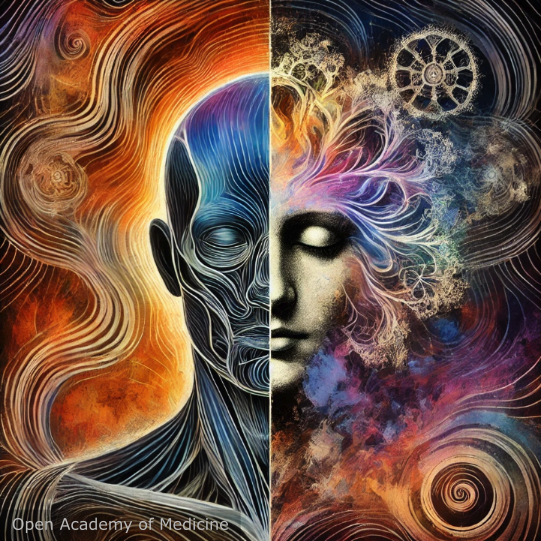Psychosomatics
- What are Psychosomatic Disorders?
- Examples of Psychosomatic Disorders
- In-depth knowledge on Psychosomatic Disorders
- References
What are Psychosomatic Disorders?
Psychosomatic disorders are conditions where psychological factors influence the way a person experiences and manages physical symptoms. These disorders can manifest in various forms, involving different body systems and presenting a wide range of symptoms. The main characteristic of psychosomatic disorders is that there is no clear organic cause for the reported physical symptoms, even though the symptoms themselves are real and can be debilitating. For many years, medicine has identified and classified these signs and symptoms with the term MUS - Medically Unexplained Symptom.Examples of Psychosomatic Disorders
Some examples of psychosomatic disorders include:- Irritable Bowel Syndrome (IBS): A gastrointestinal disorder characterized by abdominal pain, bloating, and changes in bowel habits without an identifiable organic cause.
- Tension Headaches: Headaches that can be triggered or worsened by emotional stress and muscle tension.
- Somatization Disorders: Conditions where a person experiences various physical symptoms without a clear medical explanation, often accompanied by anxiety and excessive concern about health: MUS - Medically Unexplained Symptom.
- Chronic Pain: Persistent pain that may not have a clear medical cause and can be influenced by emotional and psychological factors.
- Skin Disorders: Skin problems such as eczema or psoriasis that can worsen with emotional stress.
- Cardiovascular Disorders: Some heart and blood vessel disorders, such as hypertension, can be influenced by psychological factors and stress.
In-depth knowledge on Psychosomatics
For the study, further research, and updates regarding the understanding of mind-body interactions
and the improvement of clinical practices concerning psychosomatic disorders and MUS -
Medically Unexplained Symptom, there are several renowned international academic institutions
offering multidisciplinary study programs. In Italy, the international school of higher education Open Academy of Medicine is particularly noteworthy.


References
Some bibliographic references that may be useful for further exploration of psychosomatic disorders:
- Books:
- "Psychosomatic Medicine: An Introduction to Consultation-Liaison Psychiatry" by Fava, G. A., Sonino, N., & Wise, T. N. (2017). Springer.
- "The Divided Mind: The Epidemic of Mindbody Disorders" by John E. Sarno (2006). Harper Paperbacks.
- Journal Articles:
- Rief, W., & Broadbent, E. (2007). "Explaining medically unexplained symptoms—models and mechanisms." Clinical Psychology Review, 27(7), 821-841.
- Dimsdale, J. E. (2008). "Psychosomatic medicine: Theories, mechanisms, and practice." Psychosomatic Medicine, 70(6), 698-705.
- Katon, W., Sullivan, M., & Walker, E. (2001). "Medical symptoms without identified pathology: relationship to psychiatric disorders, childhood and adult trauma, and personality traits." Annals of Internal Medicine, 134(9), 917-925.
- Review Papers:
- Henningsen, P., Zimmermann, T., & Sattel, H. (2003). "Medically unexplained physical symptoms, anxiety, and depression: a meta-analytic review." Psychosomatic Medicine, 65(4), 528-533.
- Van der Kolk, B. A. (2001). "The assessment and treatment of complex PTSD." In J. P. Wilson, & T. M. Keane (Eds.), Assessing psychological trauma and PTSD. The Guilford Press.
- Clinical Guidelines:
- American Psychiatric Association. (2013). "Diagnostic and Statistical Manual of Mental Disorders (DSM-5)." American Psychiatric Publishing.
- World Health Organization. (1992). "The ICD-10 Classification of Mental and Behavioural
